These popular spicy potato noodles are thick, bouncy, chewy, and coated in a garlicky, savory, tangy, and mildly spicy chili oil sauce. It's incredibly delicious and irresistibly addictive, especially with a sprinkle of cilantro! This recipe is definitely fun to make for weeknight dinner and pairs perfectly with some chicken karaage or Taiwanese fried chicken and Chinese smashed cucumber salad.
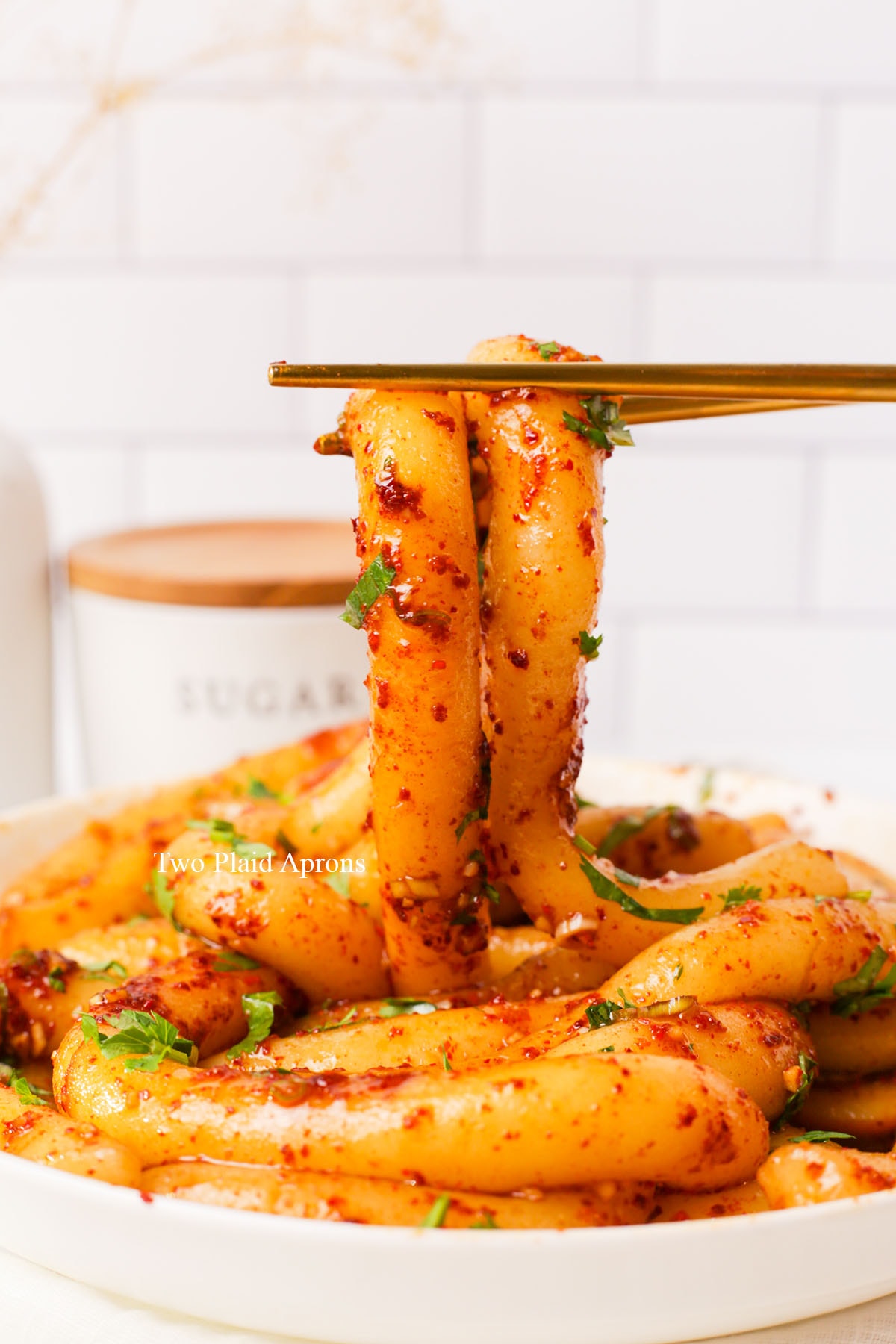
If you’ve made this recipe or any recipes from our blog, please tag us on Instagram using #twoplaidaprons! You can also tag us in your Instagram stories using @two_plaid_aprons. We would love to see your creations! It absolutely makes our day! 🥰
Jump to:
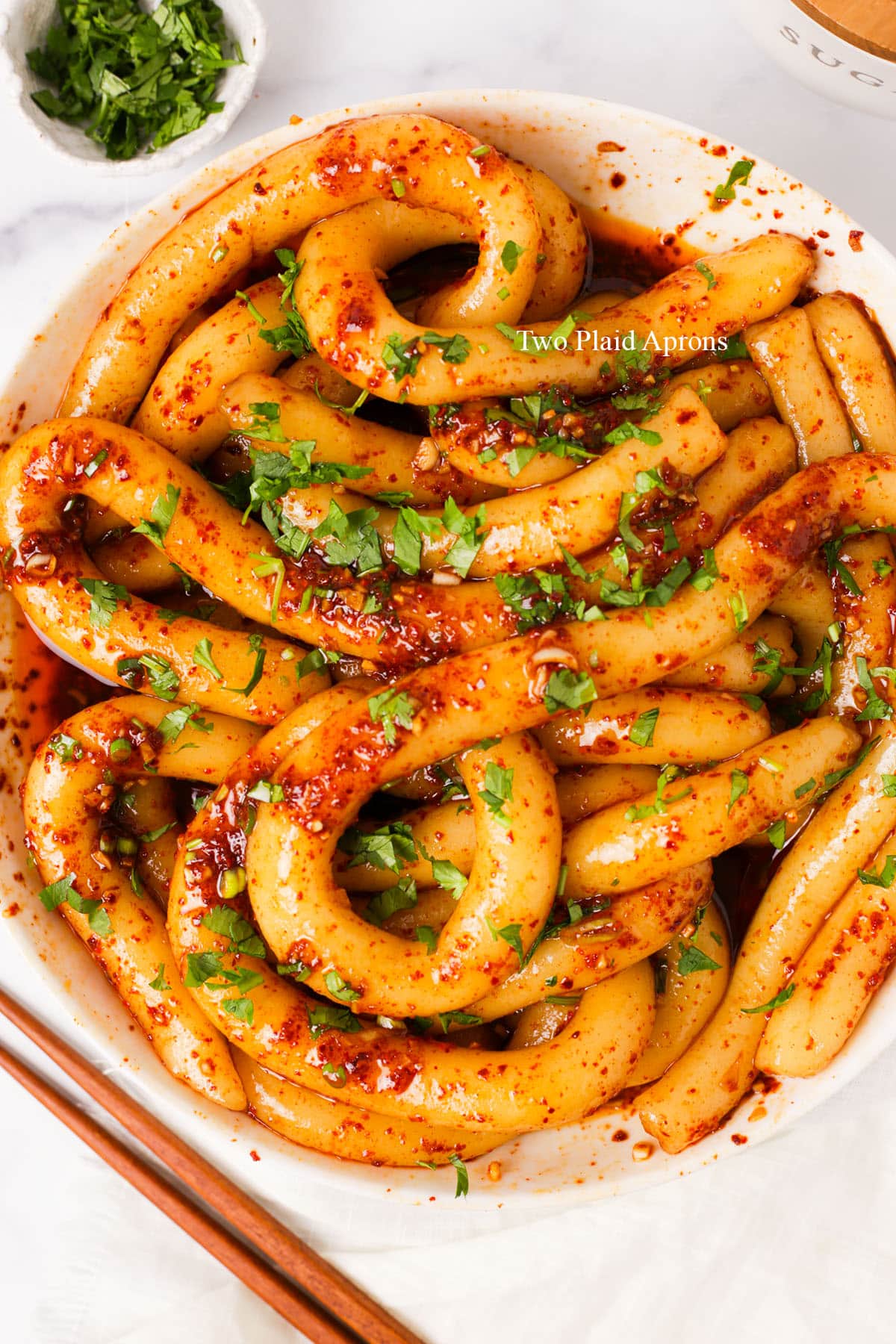
Ingredient notes
Please scroll down to the recipe card for the ingredient quantities!
For the potato noodles:
- Potato and potato starch - Although traditional potato noodles can be made by using only potato starch, we wanted to make the noodles as seen in the viral TikTok videos. The potato starch provides the bounce and chewiness, while the potato provides the flavor and also so that you won't have to use a whole bag of potato starch. Potato starch is available at most Asian markets.
- Water - Additional moisture is needed to make the dough come together. We recommend using warm water to help keep the dough warm and more pliable.
- Salt - For seasoning the noodles.

For the chili oil sauce:
- Soy sauce - We used regular soy sauce for this recipe. If you're using low sodium soy sauce, you may need to add an extra pinch of salt.
- Chinese black vinegar - Also known as Chinkiang vinegar or Zhenjiang vinegar. It's dark in color, fragrant, tangy but milder than white vinegar. It's also got a mild sweet and caramelized flavor.
- Gochugaru - Also known as Korean red pepper flakes, as seen and used in many korean recipes, such as napa cabbage kimchi, doenjang jjigae, and tteokbokki. You can use either the coarse or fine ground version. If you don't have gochugaru, Chinese red pepper flakes/powder is good too.
- Sugar and salt - To round out the chili oil sauce.
- Garlic and green onion - These two are the aromatics that will make the spicy chili oil sauce super yummy!
- Oil - You need oil to make chili oil sauce! Any neutral oil will do. We usually use avocado, sunflower, grapeseed, or just canola oil.
- Cilantro - This is not for the chili oil, but pairs incredibly well with it. It adds a nice touch of freshness to the dish as well.
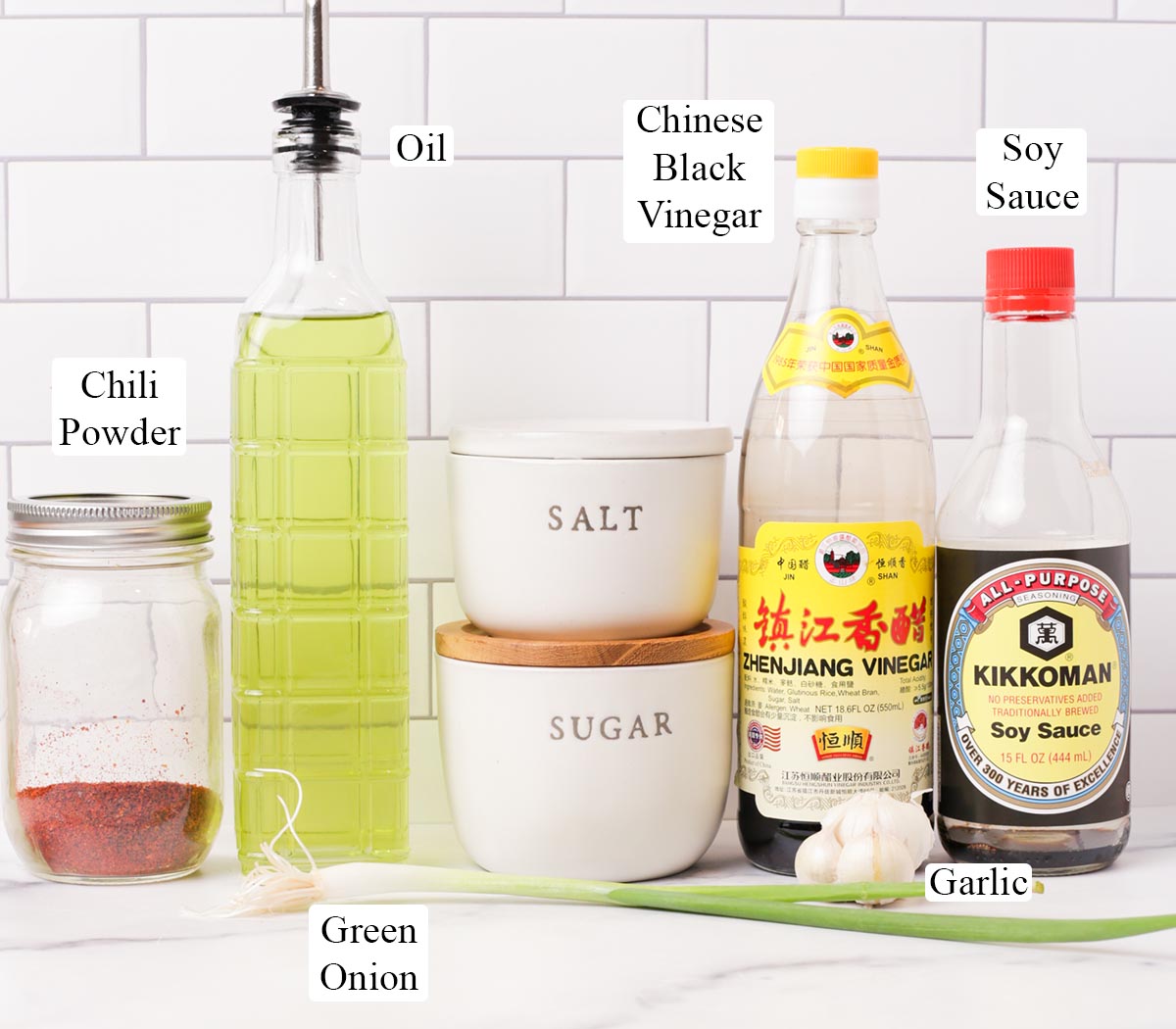
How to make spicy potato noodles
Please scroll down to the recipe card for the full recipe and instructions!
Make the potato noodles:
1. Boil potato. Place the potatoes into a pot of boiling water and cook until fork tender, about 15 minutes. Drain well and place the potato into a mixing bowl.
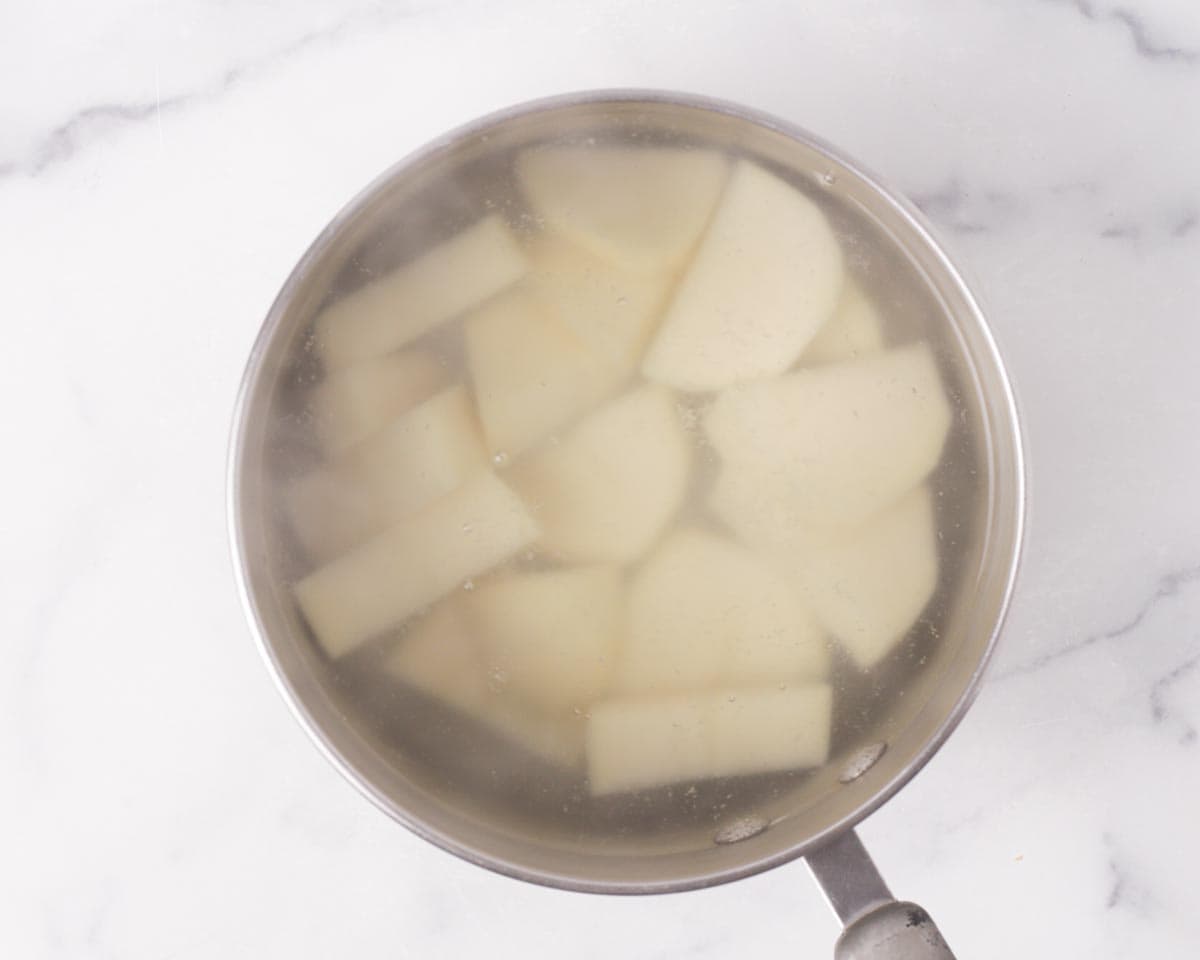
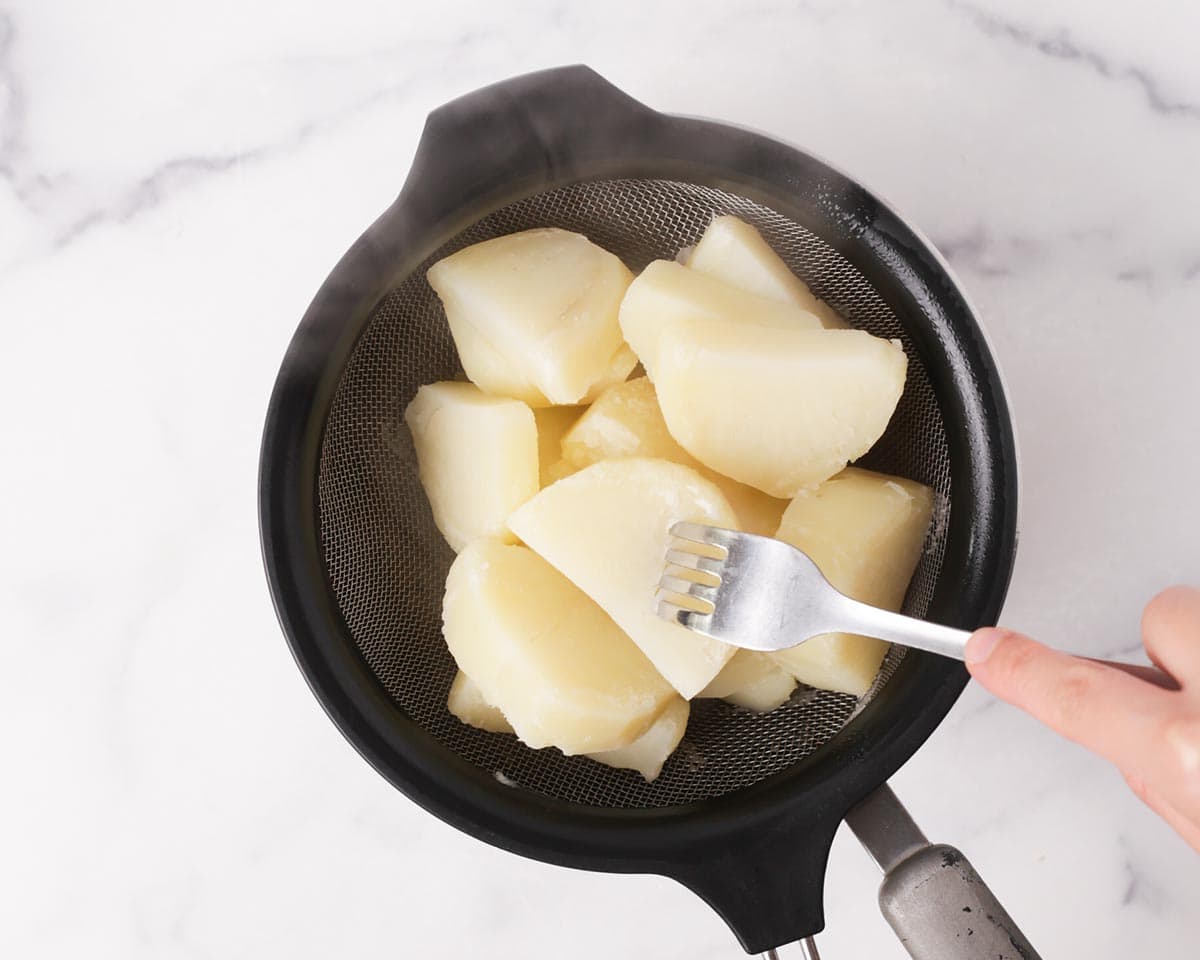
2. Make potato dough. To the potato, add salt and mash the potato as fine as possible.
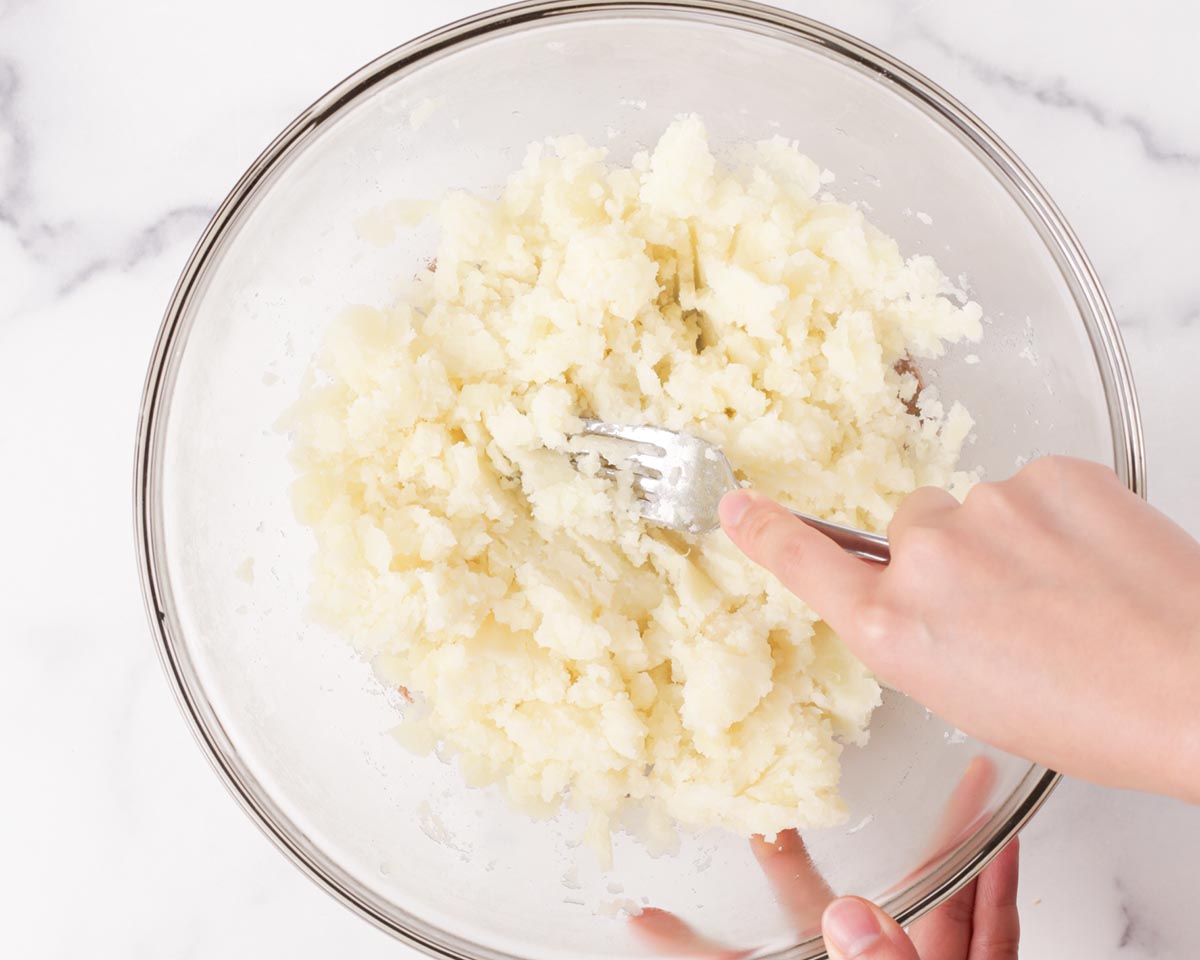
Then while the potato are hot, add the potato starch and mix until cohesive. If the dough is not too hot for you, try kneading the dough until it kind of comes together.
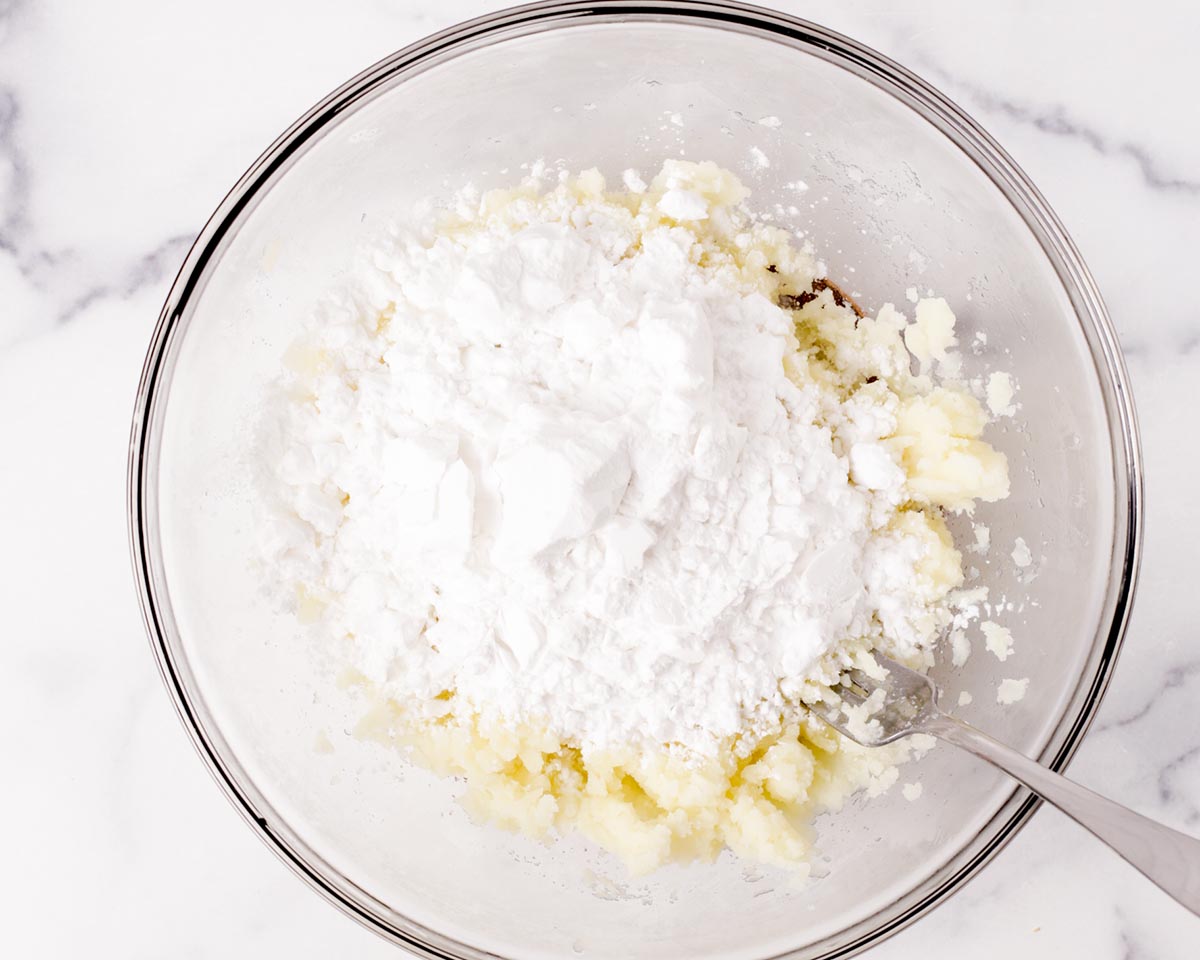
Add the warm water and knead until the water is absorbed and the dough is mostly smooth.
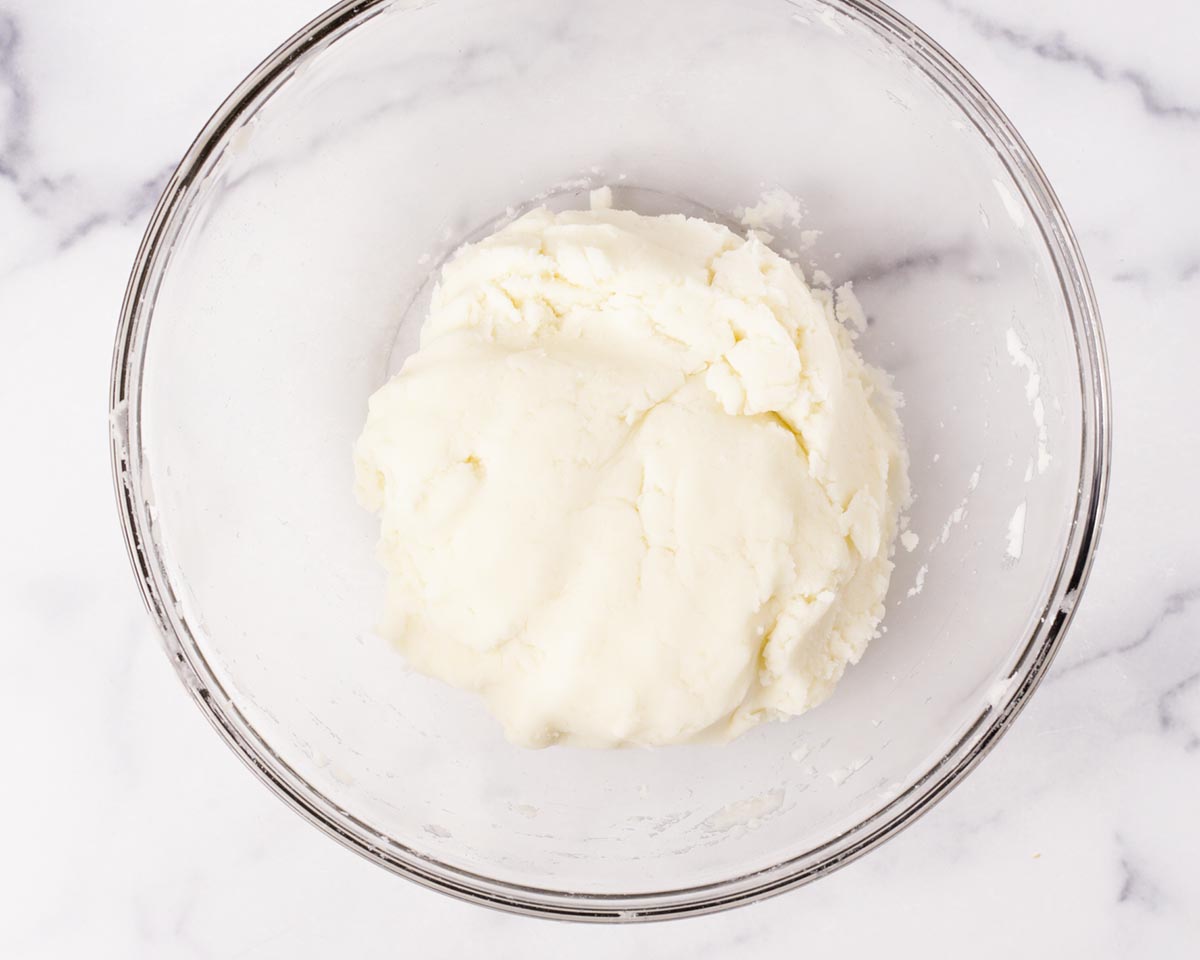
3. Portion dough and shape noodles. Cut the dough into 14 equal pieces and keep all the dough covered with a damp towel when not using.

Working with 1 pieces of dough at a time, gently roll the dough into a ½ inch thick noodle/rope. Repeat with remaining dough.
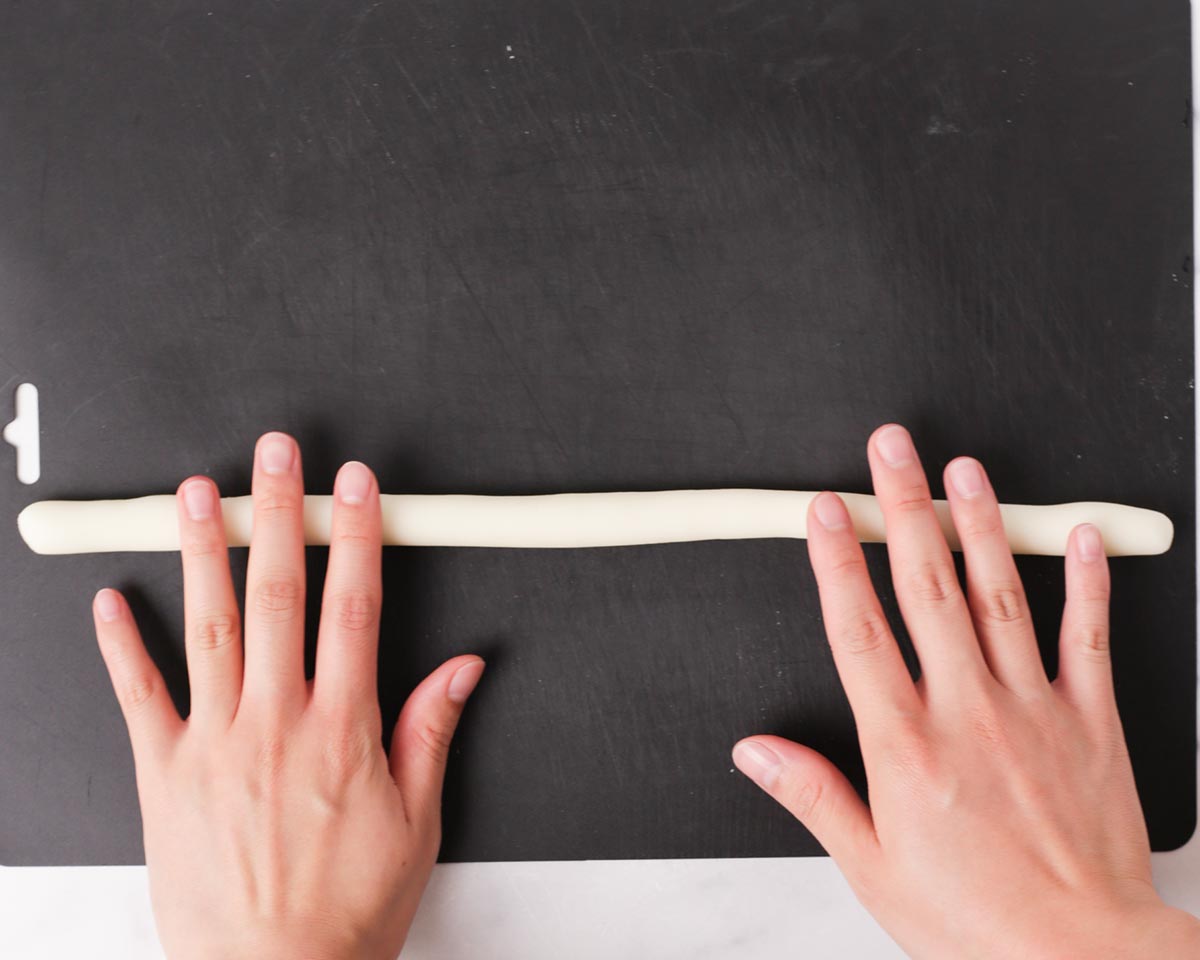
📝 Note: This process is so much easier if the potato starch is kneaded into the potato while the potato is hot. It'll also be much easier to shape and roll if the dough is still warm. As the dough cools, it tends to become more brittle and likely to crack. If your dough cooled too much and breaks easily, we recommend mashing/pinching the dough roughly into the right thickness. Then gently roll it into a rope. Also, cooking the potato noodles as you roll each piece will help prevent the noodles from cracking.
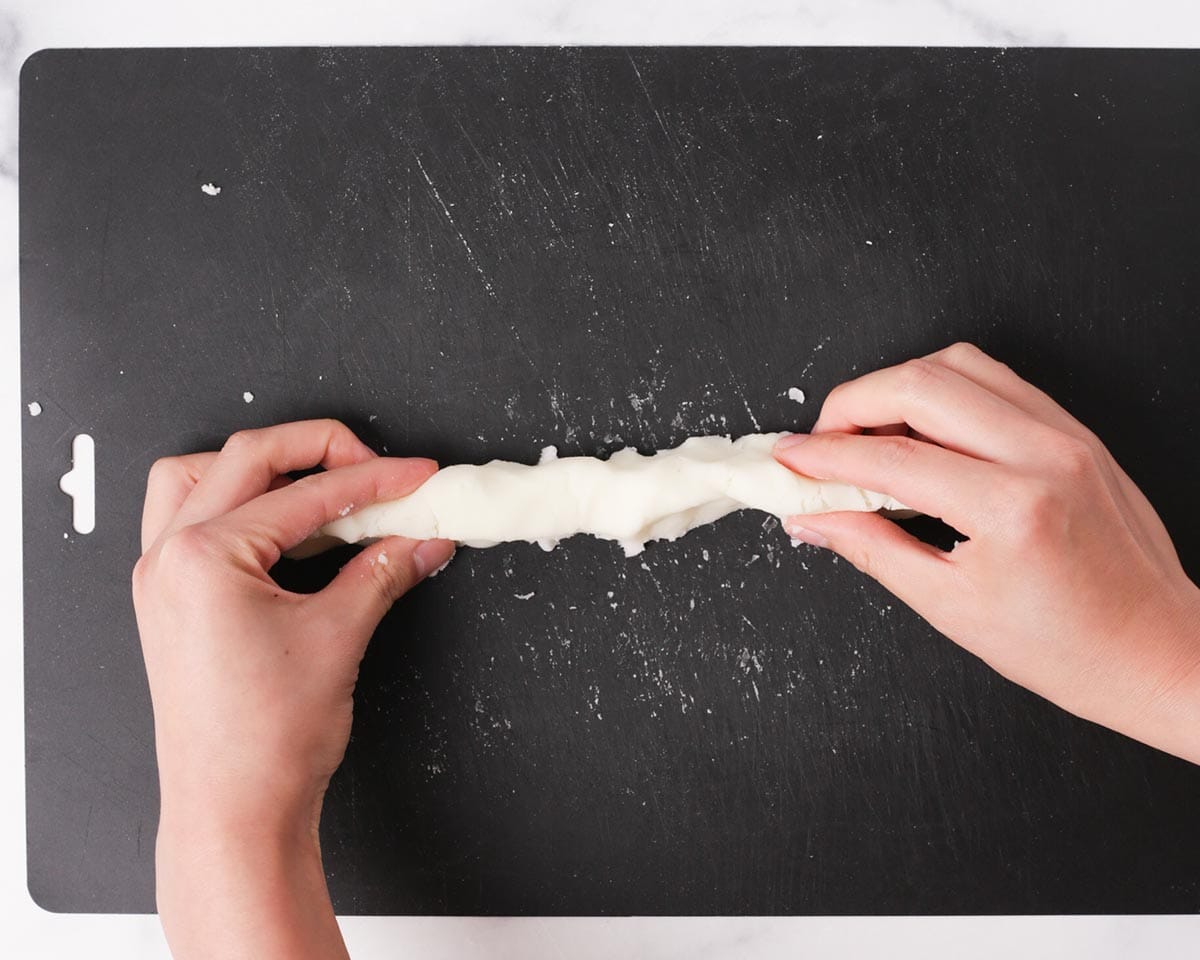
4. Cook the noodles. Into a pot of boiling water, gently add the potato noodles one at a time. Make sure the entire noodle gets submerged in the water and gently give the noodles a stir to prevent them from sticking to the bottom of the pot.
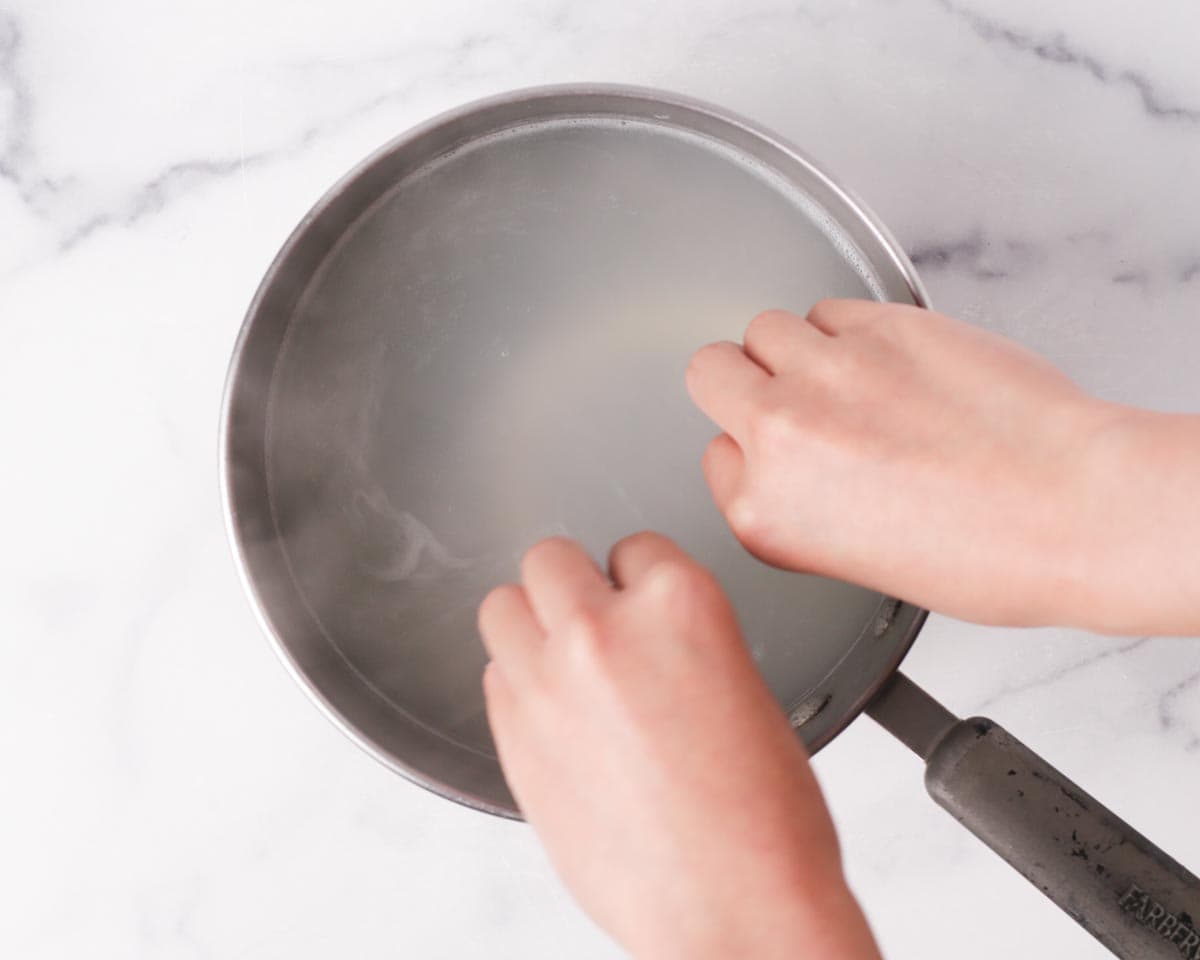
Allow the noodles to cook until they float to the surface and then cook for an additional minute. Strain the potato noodles and place them into a some cool water.
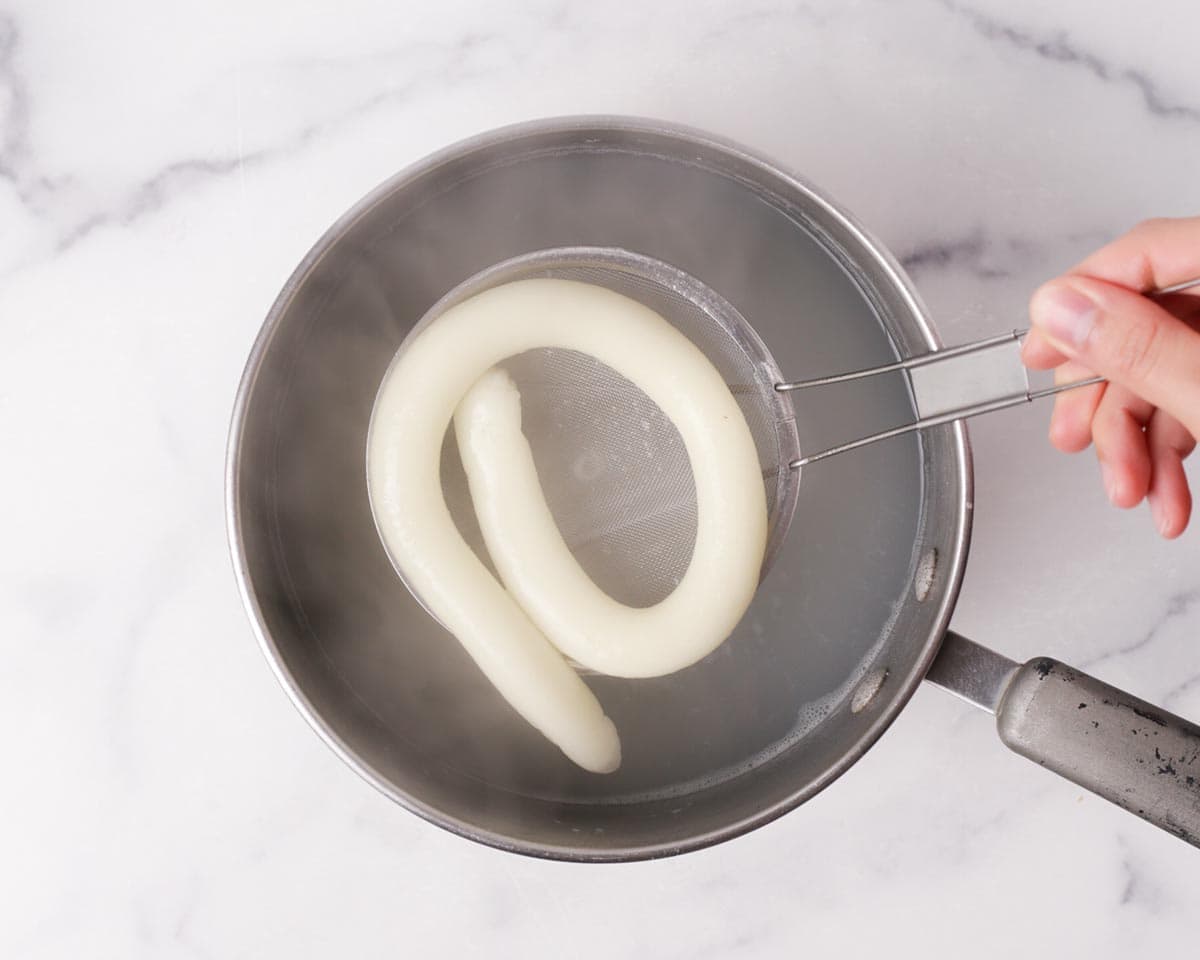
Make the sauce and assemble:
5. Make the chili oil sauce. Into a heatproof bowl, combine soy sauce, the black vinegar, gochugaru, sugar, salt, garlic, and green onion.
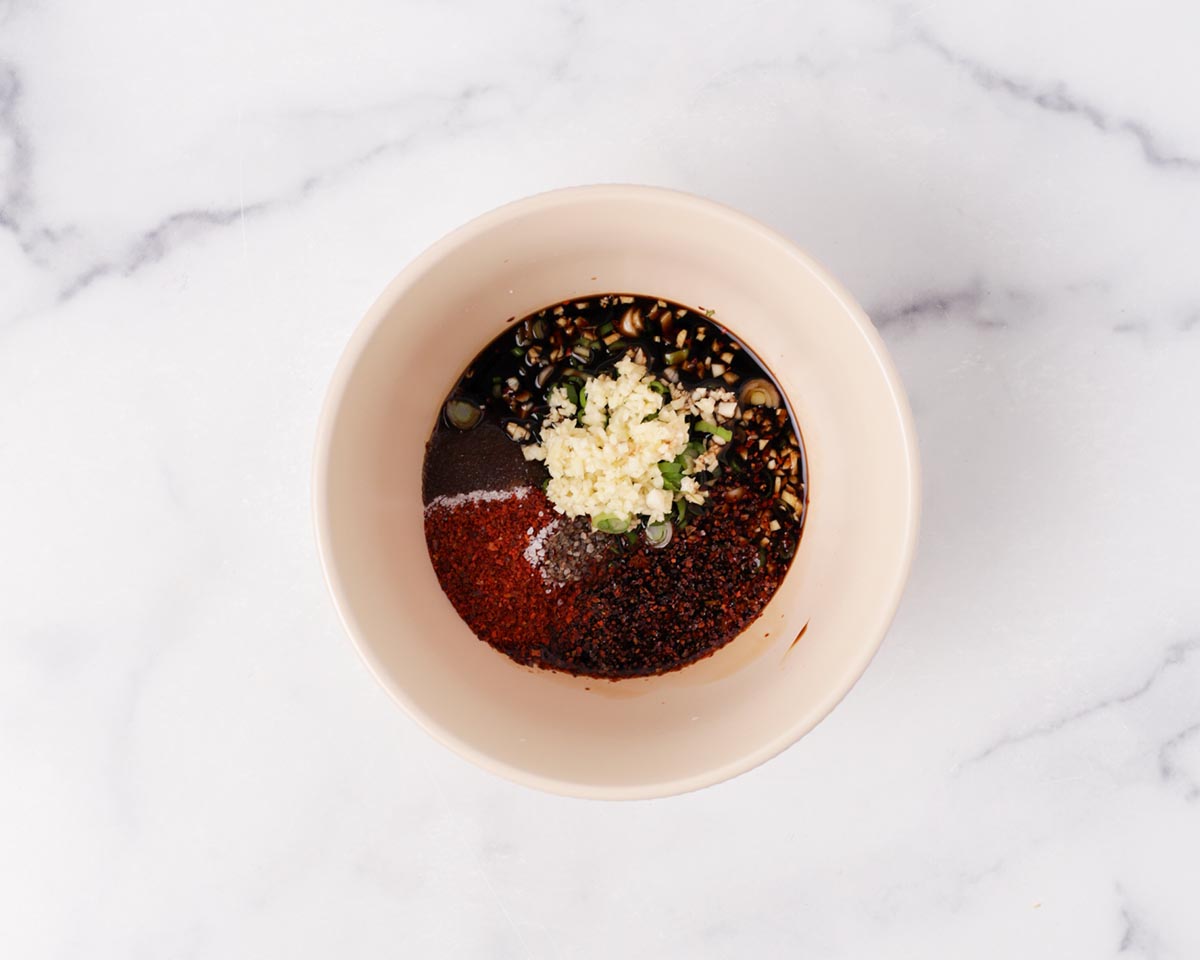
Heat the oil in a small pan until it starts to smoke, and carefully pour it over all of the ingredients in the bowl. Give the sauce a stir.

6. Assemble. Drain the potato noodles well and place into a large clean bowl or plate. Pour the prepared chili oil over the noodles and add the chopped cilantro. Mix well until the noodles are evenly coated. Enjoy while warm!
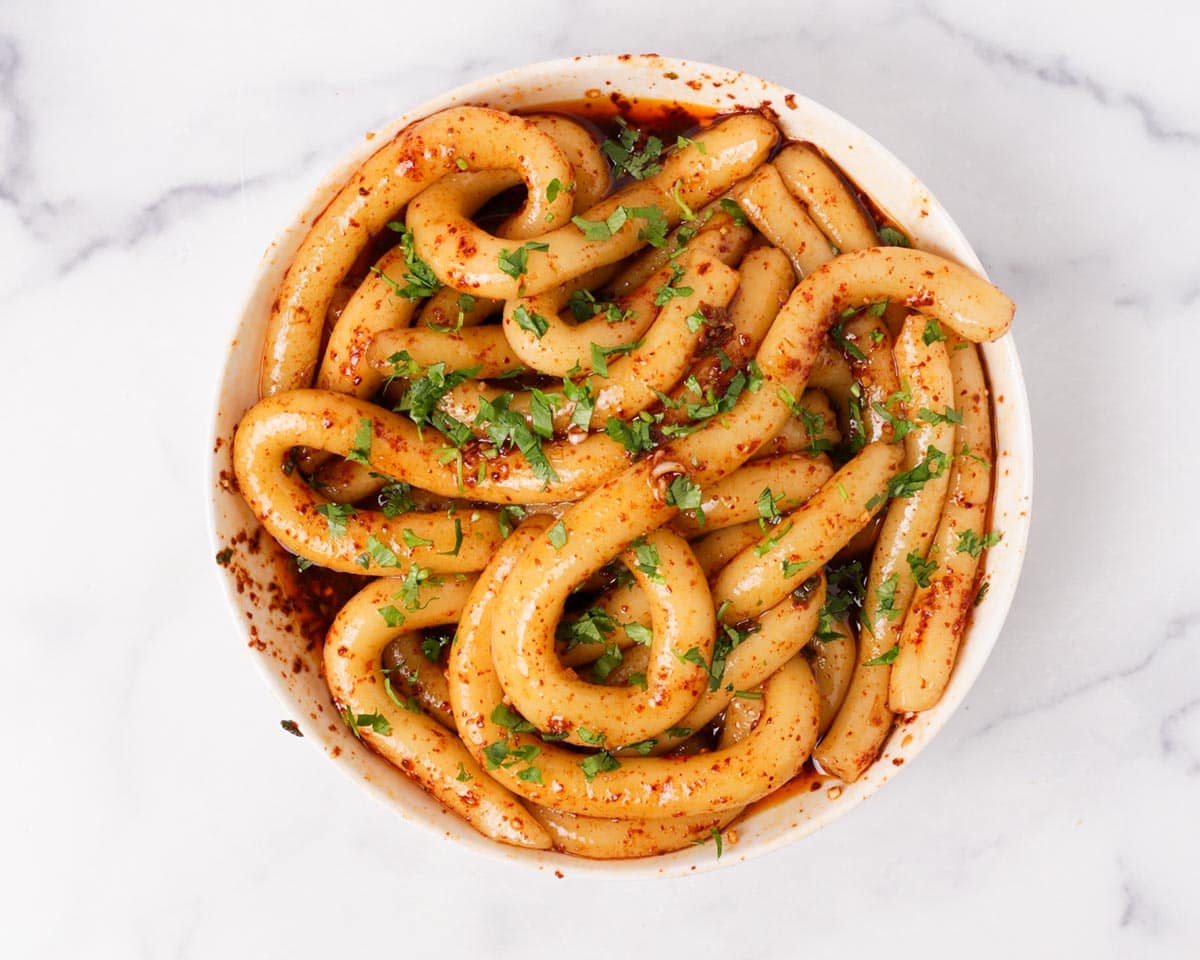
Recipe tips
- Work the dough while it's hot. Of course only do so if you can heat. But doing so ensures the potato dough is as pliable as possible, making the potato noodles easier to work with and less likely to crack and break.
- Use a wide pot. It is essential that the potato noodles are completely submerged when they're added to the boiling water. If any part is exposed when first added, the exposed section will break off. Also, using a wide pot to cook the potato noodles means the noodles won't have to be curled as much to fit. The noodles become more fragile as it cools, so the less curling/bending, the better.
- Cook the noodles one at a time if needed. If the potato dough/noodles become too cool and starts to crack and break easily, it's best to cook the noodles as you're making them. As the noodles sit, it'll become even more fragile.
- Always keep the dough covered with a damp towel when not using. This prevents the dough from drying out.
- Prepare the dough making station and cooking station close to each other. This is so that you can drop the noodles into the pot of boiling water, if needed, right after you finish rolling them.
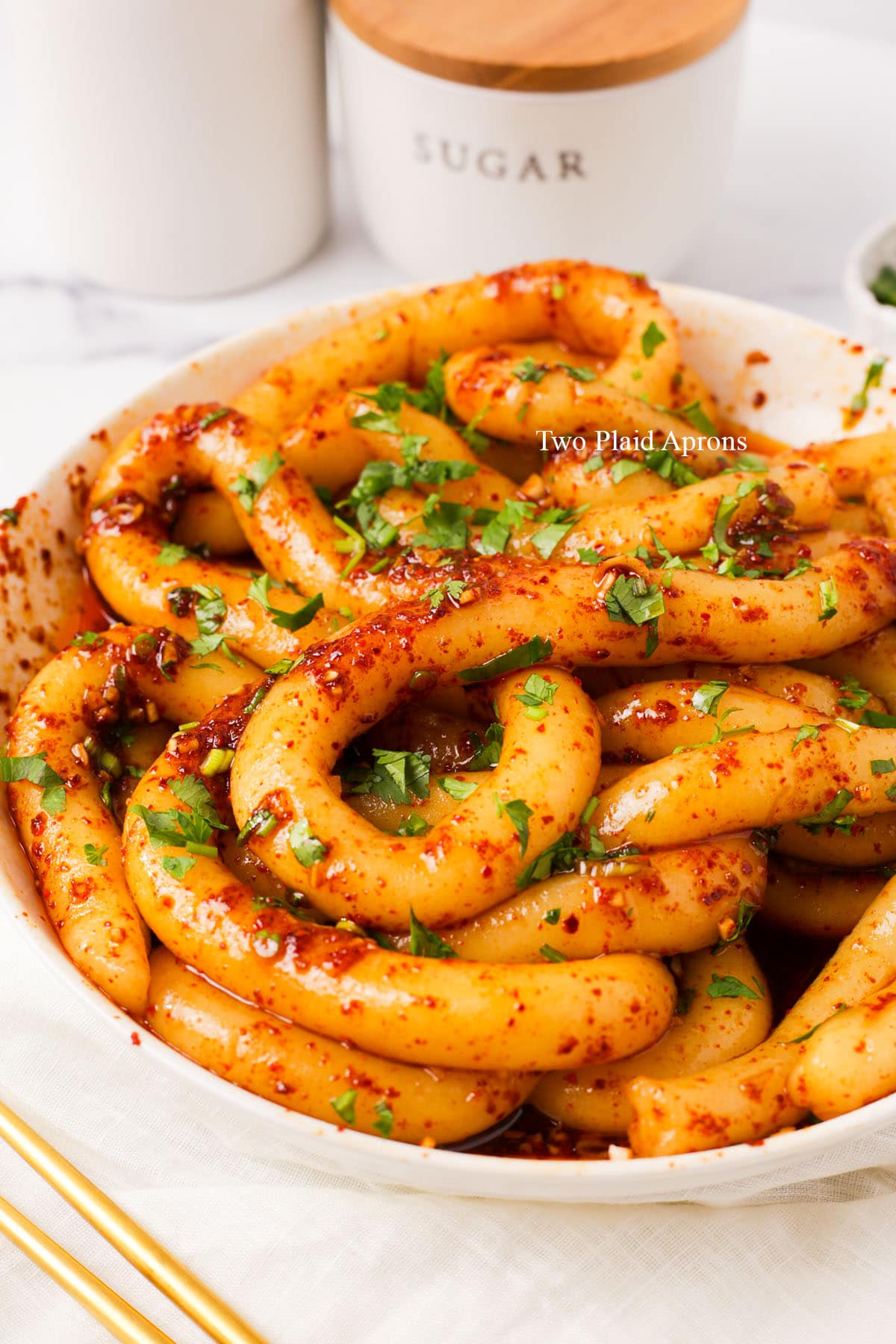
Storage
These spicy potato noodles are best freshly made. The noodles are much bouncier and chewier. But if you do have leftovers, you can simply allow the noodles to cool completely, then store them in the fridge, in an airtight container, for up to 3 days.
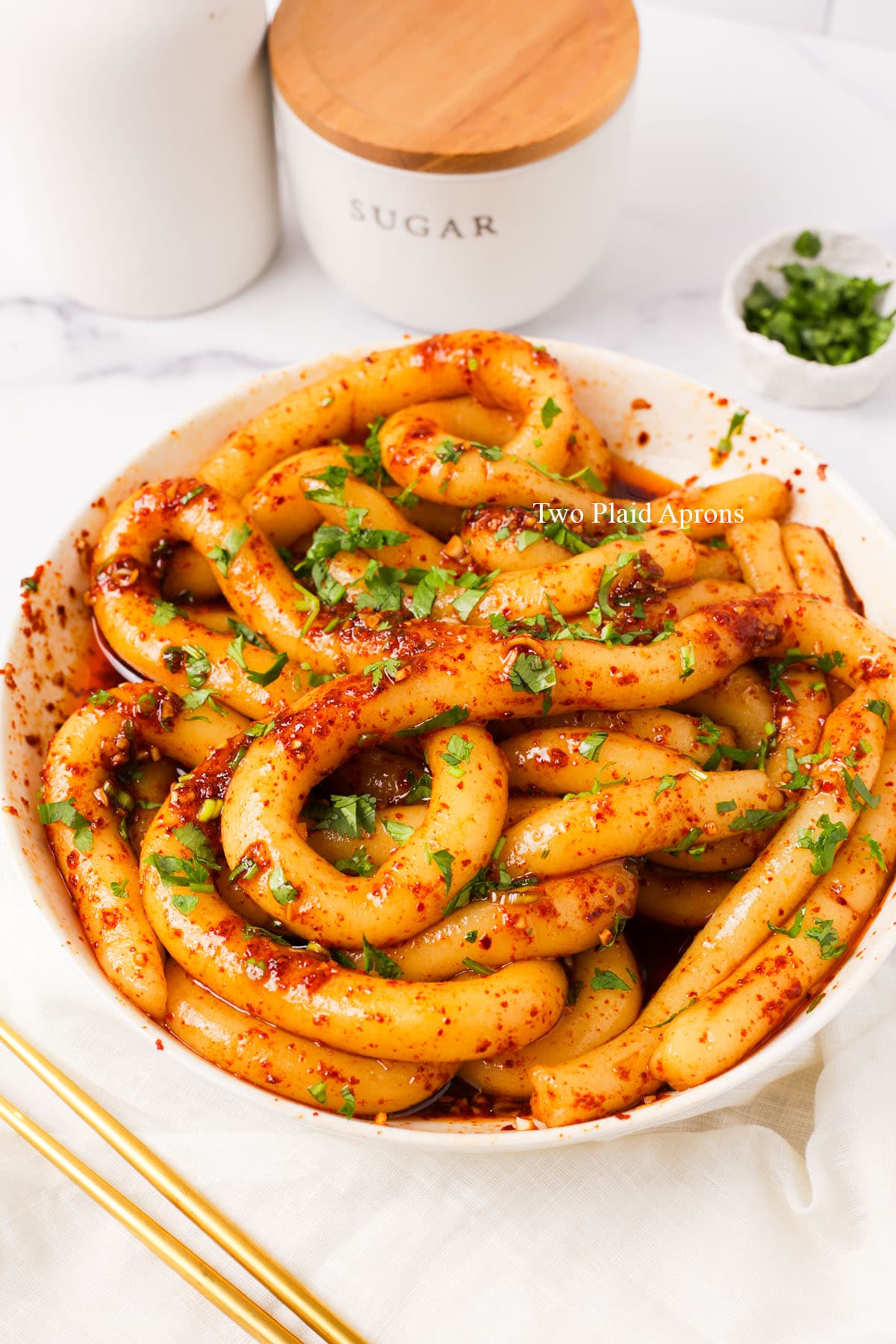
Reheating
Although freshly made potato noodles have the best chewy texture, they can be reheated if you have leftovers.
We recommend reheating refrigerated spicy potato noodles in the microwave for a few minutes, or until the noodles are soft and chewy again. Make sure to use a microwave safe bowl and keep the noodles loosely covered while heating.
If your leftover potato noodles are not already coated in sauce, you can reheat the noodles by simmering them in a pot of water until they are soft and chewy again.
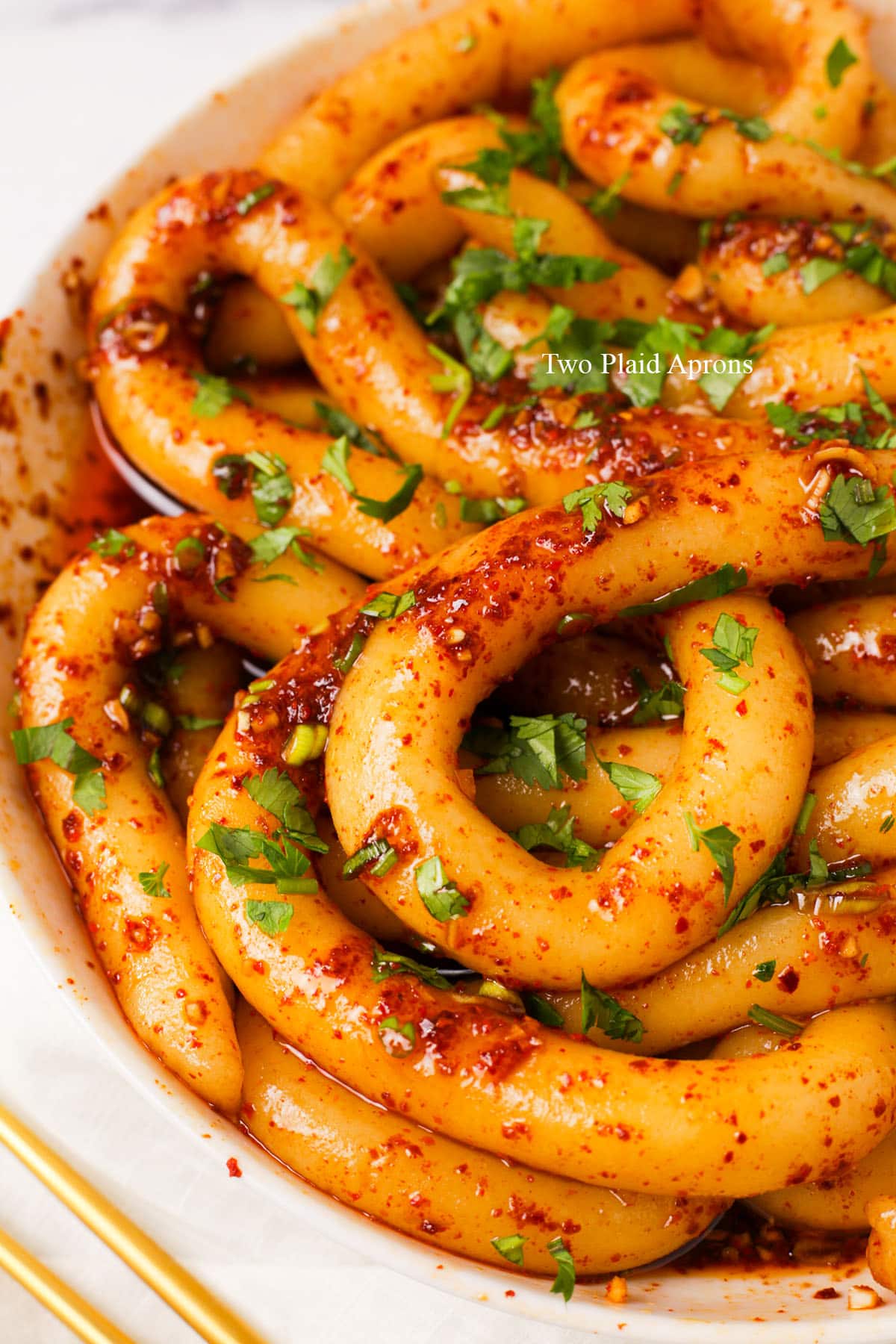
FAQ
These homemade potato noodles are very mild in flavor and have a slight potato flavor. The main flavoring of this dish comes form the garlicky, tangy, and spicy chili sauce the noodles are tossed with.
We do not recommend substituting potato starch with cornstarch because cornstarch will not yield the same chewy, bouncy texture that's provided by potato starch. You can find potato starch at most Asian markets.
If you can't find Chinese black vinegar, you can substitute it with either regular white vinegar or regular rice vinegar. NOTE: You may want to use about ½ tablespoon less of these two substitutes because they are a little stronger than the black vinegar.
📖 Recipe
Spicy Potato Noodles
Ingredients
For the potato noodles:
- 1.1 pounds russet potato peeled and cut into 1 inch pieces (gold potato is fine too)
- ½ teaspoon salt
- 1½ cup potato starch
- ½ cup water warm
For the chili oil:
- 2 tablespoons regular soy sauce
- 2 tablespoons Chinese black vinegar
- 2 tablespoons gochugaru (coarse) or fine ground (or Chinese chili powder)
- 1¼ teaspoons granulated sugar
- ⅛ teaspoon salt
- 2 tablespoons garlic minced
- 1 stalk green onion sliced
- 3 tablespoons oil any neutral oil such as avocado, sunflower, grapeseed, etc
- ⅓ cup cilantro roughly chopped
Instructions
- Cook the potato:Place the cut potatoes into a pot of boiling water and cook until fork tender, about 10 to 15 minutes.
- Make the dough:Once the potato is cooked, drain well and place into a heatproof mixing bowl. Add the salt and mash the potato with a fork until no more chunks are visible.
- While the mashed potato is hot, add the potato starch and mix until well combined. If the dough is not too hot for you, start kneading the dough until cohesive.*This step will help tremendously with keeping the dough pliable. The heat from the potato kind of cooks the starch, gelatinizing it and making it stretchier. It also helps to shape the noodles while the dough is warm for easy handling.*
- Add the water and mix the dough until the water is absorbed and an almost smooth dough forms. The dough won't be stretchy like bread dough, but it will be pliable enough for shaping, especially if it's warm.
- Make the potato noodles:Bring a pot of water to a boil and prepare the noodle making station as close to the cooking station as possible. Also prepare a large bowl of cold water.
- Divide the dough into 14 equal pieces. Keep the dough covered with a damp towel at all time when not using. Working with 1 pice of dough at a time, roll each piece of dough into ½ inch thick noodles. *Please refer to the post above for step by step photo references and tips!*
- Gently place the potato noodles into the boiling water but be careful not to overcrowd the pot. The noodles need to be fully submerged when added to the water, or they will break. Gently give the noodles a stir after adding.
- Allow the noodles to cool until they float to the top, then cook for an additional minute. Remove the noodles and place them into the bowl of cold water. Repeat with remaining potato noodles.
- Make the chili oil:In a heatproof bowl, add all of the ingredients for the chili oil EXCEPT the oil and cilantro. Heat the oil in a small pan until it starts to smoke and carefully pour the hot oil over all of the ingredients in the bowl. Once the oil has settled down, give the chili oil a stir.
- Assembly:Drain the potato noodles well and place it into a large clean bowl. Add the prepared chili oil and the chopped cilantro, and mix until the noodles are well coated. Enjoy while warm!
Notes
- Because the potato noodle dough is made with potato and potato starch, there's no gluten to hold it together like wheat dough. So as the dough cools, it'll become more brittle and have the tendency to crack and break. So if possible, work fast and take advantage of the dough while it's hot/warm. That is when the dough is the most forgiving and pliable.


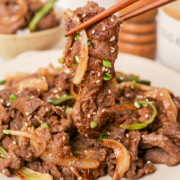






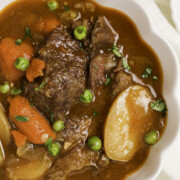
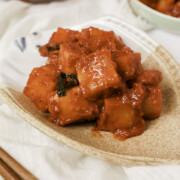
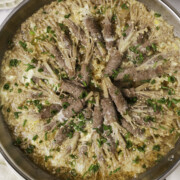
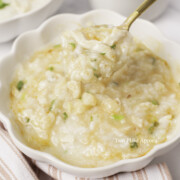





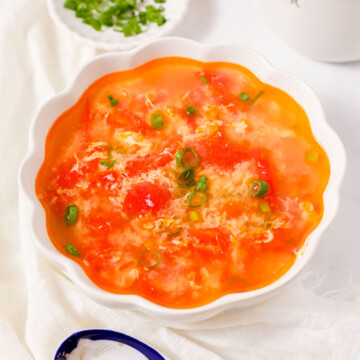
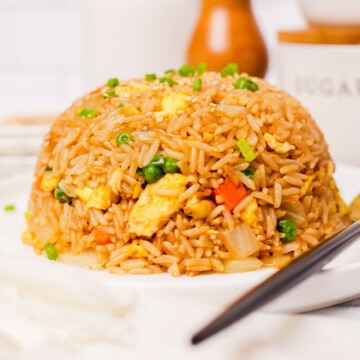
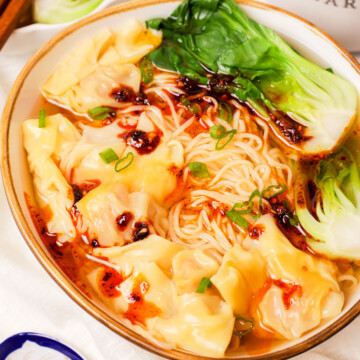
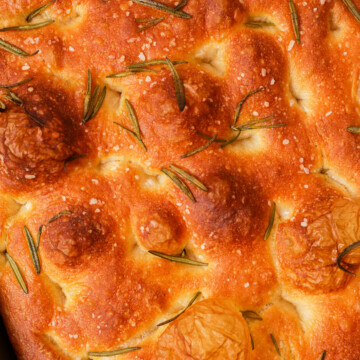
Rashi says
Hello.
Would this work if I have leftover mashed potato? Also, is there a substitute for the potato starch? Would cornstarch/flour work?. Thank you. 🌹
Mei says
Hi Rashi!
We have not tried using leftover mashed potatoes, so can't say for sure. However, it would most likely work, but you'll have to play with the ratio of the potato starch if you added additional ingredients into your mashed potato. But most importantly, the potato needs to be hot when the starch is added. This "cooks" the starch which makes the dough more malleable and pliable.
As for the starch, potato starch is of course the best choice for the texture. Tapioca starch and rice flour is our secondary choice, but the texture and flavor will not be the same. Hope this answered your questions! If you're interested, we have more info in our post, above the recipe =)
Mei ❤️
Maria says
It would, I recommend running them through a really fine sieve, purée masher or a fine meat grinder, so that the texture is nice and fluffy.
These noodles are like “kopytka” in Polish cuisine and there are made with leftover mashed potatoes. Hope this helps ☺️♥️
Alyssa Archibeque says
Hello!
I was wondering if tapioca starch would be an okay substitute given it also has a bouncy texture. I travel on the road and have it readily available otherwise it will be wasted.
Thank you!
Mei says
Hi Alyssa! Yes, you can definitely use tapioca starch as a substitute for potato starch in this recipe since the tapioca starch will also yield a chewy, bouncy texture, as you mentioned =)
Mei ❤️
Ki says
Hi, may I use sweet potato instead of normal ones too? Many thanks 🙂
Mei says
Hi Ki! Yes, sweet potato is okay for this, however, you'll need to change the amount of potato starch used because sweet potato contains much more moisture than regular potatoes. =)
Mei ❤️
Tam says
Can you make these ahead and eat them the next day, or will the texture be mushy?
Mei says
Hi Tam! We do not recommend making the ahead of time. As the potato noodles sit, they start to loose they chewy, bouncy-ness.
Mei ❤️
Melissa says
Made this tonight and it was A LOT OF WORK. Don't be deceived by the viral tik toks or this recipe. Getting the potatoes mashed, rolled and boiled was not an easy task all while keeping everything warm! Nearly impossible.
Mei says
Hi Melissa! This recipe is definitely more work than what is show on videos and we feel your frustration! It's one of those recipes that's worth trying and may take a couple rounds of practice.
But we hope you were able to enjoy the potato noodles because the sauce is really good =)
Mei ❤️
Aga says
These are amazing! I made sure to knead the dough when potatoes were still hot (and I mean HOT!), added hot water too and it came out nice and pliable. Found it helpful to wear a glove (a knitted one, like you use during winter) with a vinyl / latex glove on top to prevent burning my hand. Niece and easy recipe, will definitely use it again, potentially with wide array of different sauces as well. Noodles are chewy and bouncy, absolutely love them!
Mei says
Hi Aga! So glad you enjoyed the potato noodles! Very excited for all the different combinations you'll try with the noodles! LOVE that you doubled up on the gloves — such a smart move! Thank you for sharing =)
Mei ❤️
zohra habib says
Hey! Can we use rice flour for making these noodles instead of potatoes? Is this taste good or not in this recipe?
Mei says
Hi Zohra! You can use rice flour in place of potato flour, however the texture will be chewier. If you wish to use only rice flour instead of the potato and potato flour, that's a completely different recipe and you'll be making tteok (rice cakes) instead, which are very tasty as well. However, you'll have to experiement with it, as we do not have measurements for making tteok (yet) or using only rice flour.
Mei ❤️